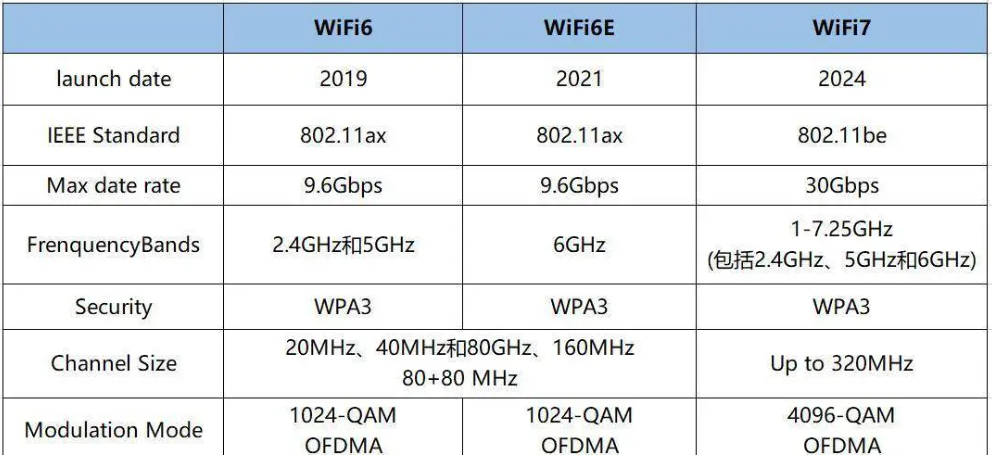WiFi 7 (802.11be)-IPQ9574+QCN9274-ultra-wide 320 MHz spectrum channel
In wireless communication, the frequency spectrum is usually divided into different channels, each channel has a specific spectral width. Taking WiFi as an example, common channel widths include 20 MHz, 40 MHz, 80 MHz, and 160 MHz. In the WiFi 7 (802.11be) standard, a wider spectrum channel width, such as 320 MHz, was introduced to provide greater bandwidth and higher data transmission rates.
At present, many wifi companies are developing and producing wifi7 products. Wallys, as one of the excellent OEMs, is of course also in the development and production of wifi7. It uses Qualcomm's new IPQ9574 and QCN9274 to develop wifi7 motherboards and wifi7 network cards respectively to meet different customers' wifi7 projects. need.
Of course, what everyone will pay attention to in wifi7 is the ultra-wide 320 MHz spectrum channel. Let’s take a closer look at its advantages and why it is necessary!
The ultra-wide 320 MHz spectrum channel is typically a feature associated with the WiFi 7 (802.11be) standard, not the WiFi 6E standard.
In WiFi, the 320 MHz ultra-wide spectrum channel has the following functions and advantages:
Higher bandwidth: Using 320 MHz ultra-wide spectrum channel can provide greater bandwidth. It provides more spectrum resources than traditional spectrum channels (such as 20 MHz or 40 MHz), so that more data can be transmitted.
Faster data rate: By providing greater bandwidth, the 320 MHz ultra-wide spectrum channel enables WiFi networks to achieve faster data transmission rates. This is important for handling large files, HD video streaming, and other high-bandwidth applications.
Multi-user performance improvements: Ultra-wide 320 MHz channels improve multi-user performance on WiFi networks. It can handle more data streams at the same time, improving the throughput and capacity of the network. This means that in a high-density user environment, more users can connect simultaneously and enjoy higher speeds and more stable connections.
Low latency: 320 MHz ultra-wide spectrum channels help reduce network latency. By providing a larger data channel, data can be transmitted from the sender to the receiver more quickly, thereby reducing communication delays. This is important for latency-sensitive tasks such as real-time applications, online gaming, and video conferencing.
Increased spectrum utilization efficiency: Using 320 MHz ultra-wide spectrum channels can improve the spectrum utilization efficiency of WiFi networks. It allows more data to be transmitted at the same time, reduces the waste of spectrum resources, and improves the overall spectrum utilization efficiency.
Wallys has over 15 years of research and development experience, experienced in linux, wifi protocol and other aspects, Qualcomm chip development drivers, kernel and other important software development, modification and compilation, to meet customers' different wifi functional needs.
We have a strong hardware design team, and experienced people know that the most difficult part of hardware design is RF circuit design, baseband, etc., while wallys team made 0 error to achieve signal integrity, such as frequency conversion of network card, from 2.4G to 900M, which is a technological breakthrough.
Clients: TIP,Facebook, Openwrt, etc
Email:sales@wallystech.com
WEB:https://www.wallystech.com/



































